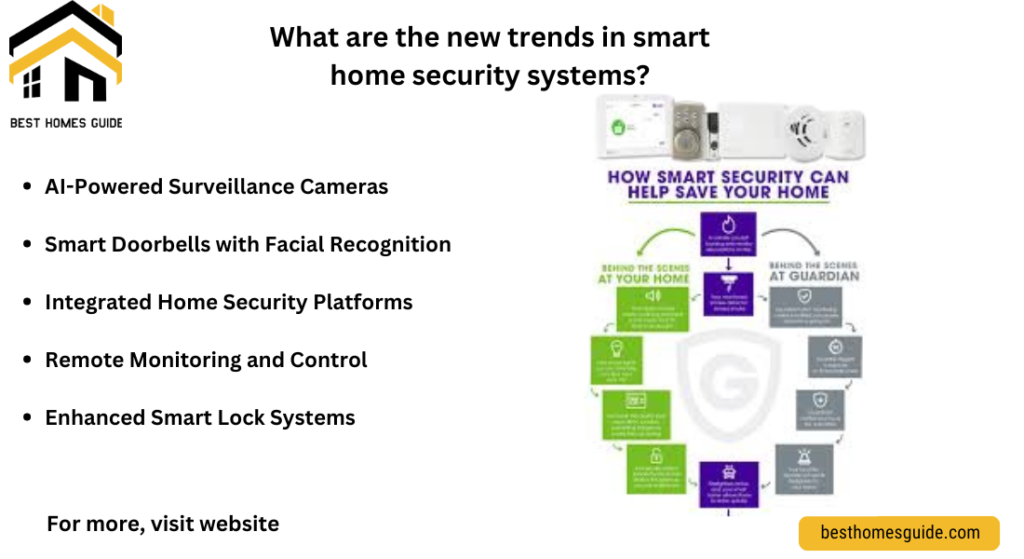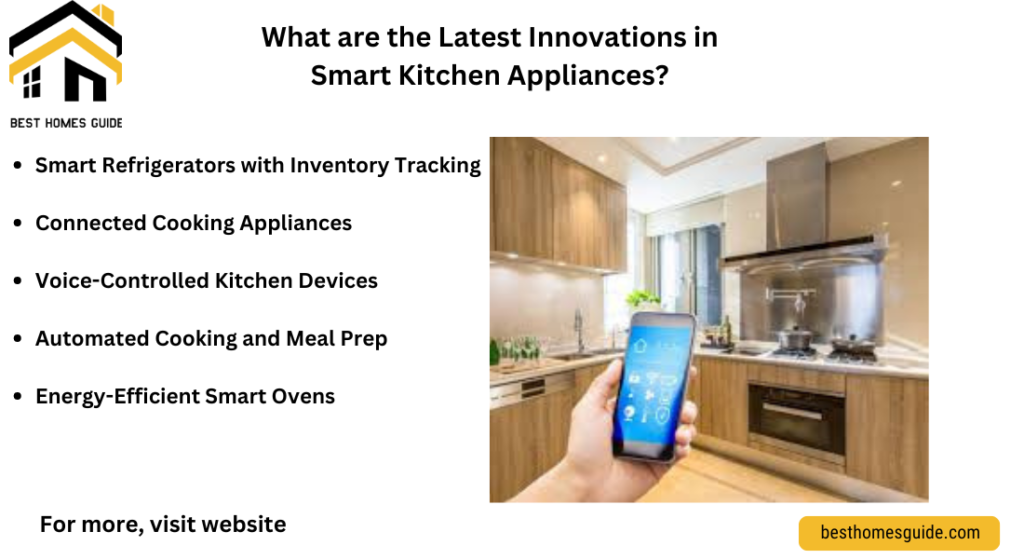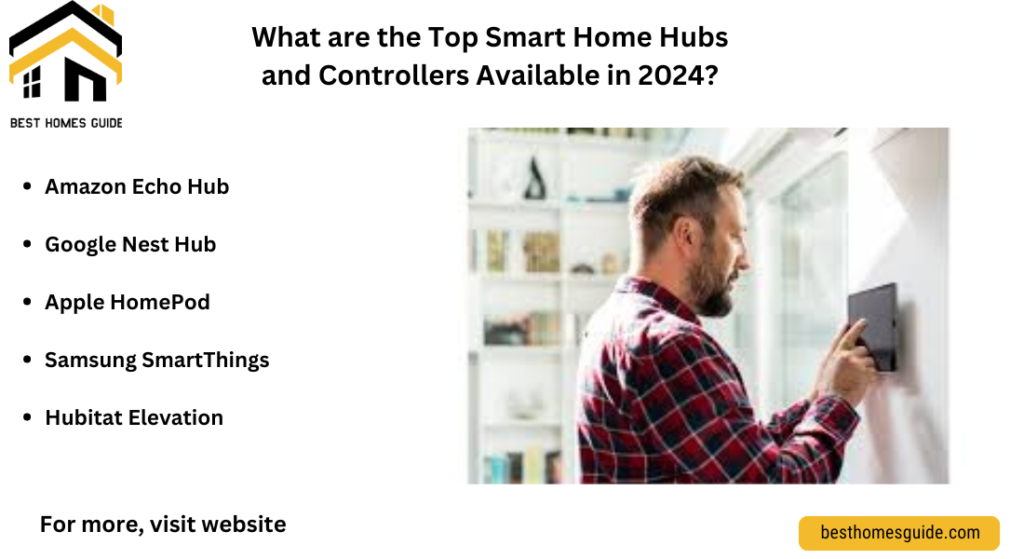The smart home technology landscape is rapidly evolving, with 2024 bringing forth an array of innovative devices and systems designed to enhance convenience, efficiency, and security in our daily lives. From advanced AI-powered assistants to sophisticated energy management solutions, the latest trends in smart home technology are set to revolutionize the way we interact with our living spaces. This article explores the cutting-edge advancements shaping the future of smart homes, providing insights into the most significant developments in this dynamic field.
What are the latest advancements in smart home lighting technology?
Smart home lighting technology has made significant strides in 2024, with a focus on creating more immersive and customizable lighting experiences. The latest advancements include:
- AI-Enhanced Lighting Systems: Companies Govee have introduced AI-powered lighting bots that respond to natural language requests, allowing users to create specific lighting effects without manual adjustments.
- Advanced Smart Light Bulbs: Innovations such as the Nanoleaf Essential Matter series offer versatile options for both indoor and outdoor use, providing mood lighting that can be easily controlled and scheduled via smartphone apps
- Energy-Efficient Solutions: Modern smart lighting systems are designed to optimize energy consumption, reducing electricity bills while enhancing the ambiance of living spaces. These systems often integrate with other smart home devices to create seamless automation routines.
- Smart lighting technology
- AI lighting bots
- Nanoleaf Essential Matter
- Energy-efficient lighting
- Smart light bulbs
- Home automation
- Customizable lighting effects
- Smart home integration
These advancements in smart home lighting not only improve convenience and energy efficiency but also contribute to creating a more personalized and enjoyable living environment. As smart lighting technology continues to evolve, we can expect even more innovative solutions that blend functionality with aesthetics, making our homes smarter and more adaptable to our needs.
How is AI transforming smart home device interactions in 2024?
Artificial Intelligence (AI) is playing a crucial role in transforming smart home device interactions, making them more intuitive, efficient, and responsive to user needs. Key advancements in this area include:
- Voice-Controlled Assistants: AI-powered voice assistants like Amazon Alexa and Google Assistant have become ubiquitous in smart home technology. These devices use AI to understand and respond to voice commands, allowing users to control smart devices, play music, set reminders, and even order groceries with simple voice instructions. The integration of AI enhances their ability to learn user preferences and provide personalized recommendations.
- Enhanced Security Systems: AI-driven security systems utilize advanced technologies such as facial recognition and anomaly detection to strengthen home protection. These systems can identify and respond to suspicious activities by analyzing video feeds in real time, sending alerts to homeowners’ smartphones, and integrating with other smart devices for comprehensive security coverage.
- Adaptive Home Automation: AI integration enables smart home technology systems to learn from user behavior and adjust settings accordingly. For instance, smart thermostats like the Nest Learning Thermostat can adapt to user schedules and preferences, optimizing energy consumption and creating a comfortable living environment. Similarly, AI-powered home automation systems can manage lighting, temperature, and even routine tasks, enhancing convenience and efficiency.
What are the new trends in smart home security systems?
Smart home security systems have seen significant advancements in 2024, driven by the integration of AI and other advanced technologies. Key trends include:
- Real-Time Monitoring and Alerts: AI-enabled security systems can send real-time alerts to homeowners’ mobile devices in case of security breaches or unusual activities. These systems provide remote monitoring capabilities, allowing homeowners to access live video feeds and control security devices from anywhere, enhancing overall safety and convenience.
Facial Recognition and Anomaly Detection: Advanced security cameras equipped with AI can distinguish between family members, guests, and potential intruders. By analyzing patterns and behaviors, these systems can minimize false alarms and provide accurate notifications about potential security threats. - Integration with Smart Home Ecosystems: Modern security systems are designed to seamlessly integrate with other smart home devices, such as smart locks and doorbells. This integration allows for coordinated responses to security events, such as automatically locking doors and activating alarms when a threat is detected.
These trends highlight how AI and smart technologies are making smart home technology safer and more secure, providing peace of mind to homeowners while enhancing the overall functionality of smart home systems.

Emerging Trends in Smart Home Entertainment Systems
The landscape of smart home entertainment is rapidly evolving, driven by significant advancements in display and audio technologies as well as integration with smart home ecosystems. Here are some of the key trends in 2024:
1. Next-Generation Display Technologies:
Advancements are in display technologies. At CES 2024, Samsung and LG unveiled their latest offerings, including Micro LED and OLED displays. Samsung’s Micro LED displays, ranging from 76 to 140 inches, provide exceptional brightness, vibrant colors, and unmatched contrast, while LG introduced the Signature OLED-T, a 77-inch transparent OLED TV, offering a blend of transparency and traditional viewing options. These innovations promise to deliver a more immersive and visually stunning home entertainment experience.
2. AI-Powered Home Theater Systems:
AI is increasingly being integrated into smart home technology theater systems to enhance the viewing and listening experience. For example, the Neo QLED 8K AI displays from Samsung use AI to upscale content to 8K resolution, providing sharper and more detailed images. Similarly, AI-driven sound bars and speaker systems are becoming more common, offering superior sound quality and adaptive audio settings that optimize based on the room’s acoustics and the content being played.
3. Enhanced Audio Solutions:
The trend towards unobtrusive yet high-quality audio solutions continues to grow. Architectural speakers that blend seamlessly into smart home technology decor, along with wireless speaker systems, are becoming the norm. These systems provide an immersive audio experience without the clutter of traditional setups. Ultra Short Throw (UST) projectors and sound bars are also gaining popularity, particularly in urban settings where space is limited, offering a compact yet powerful home theater solution.
How are Smart Home Energy Management Systems Improving Home Efficiency?
Smart home energy management systems are evolving to provide more efficient and sustainable solutions for homeowners. Here are some of the latest trends:
1. AI-Driven Energy Optimization: AI plays a crucial role in optimizing energy consumption. Advanced smart thermostats, like the Nest Learning Thermostat, learn user habits and adjust heating and cooling settings to maximize efficiency. These systems can significantly reduce energy usage and costs by ensuring that energy is used only when needed. Additionally, AI algorithms can analyze energy usage patterns and provide recommendations for further savings.
2. Integration with Renewable Energy Sources: Modern energy management systems are increasingly integrating with renewable energy sources such as solar panels. These systems can manage the energy produced by solar panels, store excess energy in home batteries, and distribute it efficiently throughout the home. This not only reduces reliance on the grid but also supports a more sustainable energy model .
3. Real-Time Monitoring and Control: Homeowners can now monitor and control their energy usage in real time through mobile apps and smart home hubs. These systems provide detailed insights into energy consumption, allowing users to identify high-usage appliances and make informed decisions about their energy use. The ability to remotely control devices and set automated schedules further enhances energy efficiency and convenience.
What are the Latest Innovations in Smart Kitchen Appliances?
Smart kitchen appliances are becoming more advanced, offering greater convenience and efficiency. Here are some of the latest innovations:
1. AI-Enhanced Cooking Appliances: AI is being integrated into kitchen appliances to provide more intelligent cooking solutions. Smart ovens and stovetops can now adjust cooking times and temperatures based on the type of food being prepared. These appliances can also offer recipe suggestions and cooking tips, making meal preparation easier and more efficient.
2. Connected Kitchen Ecosystems: Smart kitchen appliances are increasingly interconnected, creating a cohesive ecosystem that can be controlled via a central hub or smartphone app. For example, smart refrigerators can monitor their contents and suggest recipes based on available ingredients, while smart dishwashers can optimize wash cycles based on load type and soil levels. This integration enhances the overall functionality and convenience of the kitchen.
3. Sustainable and Energy-Efficient Designs: Sustainability is a key focus in the development of smart kitchen appliances. Newer models are designed to be more energy-efficient, using less water and electricity without compromising performance. Additionally, many appliances now feature eco-friendly materials and components, contributing to a more sustainable household.
These innovations in smart home technology are transforming our living spaces, making them more efficient, convenient, and enjoyable. As these trends continue to evolve, we can expect even more advanced and integrated solutions that cater to our modern lifestyles.

How are Smart Home Systems Enhancing Home Wellness and Health Monitoring?
smart home technology systems are increasingly focusing on wellness and health monitoring, integrating advanced technologies to provide comprehensive health insights and improved living conditions. Here are the latest trends:
1. Wearable Health Monitoring Devices: Smart rings and watches are leading the way in health monitoring technology. Devices like the Oura Ring and Garmin Venu 3 offer extensive health metrics, including sleep tracking, heart rate monitoring, blood oxygen levels, and stress detection. These devices provide real-time data and insights through connected apps, helping users manage their health more effectively. For instance, the Oura Ring Horizon is praised for its detailed physiological data and luxurious design, while the Garmin Venu 3 offers robust fitness and health tracking features with long battery life.
2. Integration with Smart Home Ecosystems: smart home technology systems are becoming more integrated, allowing for seamless health monitoring. Devices like the RingConn Smart Ring connect with platforms like Apple Health and Google Fit, enabling users to access detailed health insights across multiple devices. This integration supports a holistic approach to health management, where data from various sources can be consolidated for a comprehensive view of the user’s well-being.
3. Advanced Health Gadgets: Innovative health gadgets are enhancing the wellness capabilities of smart home technology. Products like smart mirrors, which provide personalized health and fitness insights, and app-controlled mattresses that adjust based on sleep data, are becoming popular. These devices help users maintain better health by offering actionable insights and automating adjustments for optimal wellness. The connected health device market is expected to continue growing, driven by increasing consumer demand and advancements in health technology.
What Role Does Voice Control Play in Modern Smart Homes?
Voice control has become a pivotal feature in smart home technology, offering users an intuitive and hands-free way to interact with their devices. Here are the key developments:
1. Pervasive Integration: Voice assistants like Amazon Alexa, Google Assistant, and Apple’s Siri are now central to smart home ecosystems. These assistants enable users to control a wide range of devices, from lighting and thermostats to security systems and entertainment centers, simply by using voice commands. This integration enhances the usability and convenience of smart home systems, making it easier for users to manage their homes efficiently.
2. Enhanced Functionality: Modern voice assistants are becoming more sophisticated, with improved natural language processing and AI capabilities. They can perform complex tasks, such as setting up multi-step routines that involve several devices, providing personalized responses based on user preferences, and even learning from past interactions to offer more relevant suggestions. For instance, AI-driven enhancements allow these assistants to sound more human and respond more accurately to nuanced commands.
3. Expanding Ecosystem: The ecosystem of voice-controlled devices is expanding rapidly. Beyond smart speakers, voice control is being integrated into appliances, smart TVs, soundbars, and even cars. This broadens the scope of what can be managed via voice commands, contributing to a more connected and seamless user experience. Products like the Amazon Echo and Google Nest Audio not only serve as voice assistants but also act as central hubs for controlling other smart home devices.
How are Smart Window Treatments Contributing to Home Automation?
Smart window treatments are an emerging trend in home automation, offering both convenience and energy efficiency. Here’s how they are making an impact:
1. Automated Control: Smart window treatments, such as motorized blinds and curtains, can be controlled remotely via smartphone apps or integrated into smart home technology ecosystems. Users can set schedules for these treatments to open and close at specific times, enhancing convenience and providing better control over their living environment. This automation is particularly useful for hard-to-reach windows and for maintaining privacy and security while away from home.
2. Energy Efficiency: These smart devices contribute to energy efficiency by optimizing the use of natural light and reducing reliance on heating and cooling systems. For instance, blinds can be programmed to close during peak sunlight hours in the summer to keep the home cool or to open during sunny winter days to let in warmth. This helps in maintaining a comfortable indoor temperature and reducing energy costs.
3. Integration with Other Smart Devices: Smart window treatments often integrate with other smart home devices, such as lighting and climate control systems, to create a more cohesive and automated smart home technology environment. For example, when paired with smart thermostats, the window treatments can adjust based on indoor temperature settings, further enhancing the home’s energy efficiency and comfort.
These advancements in smart home technology are making homes more efficient, secure, and personalized, improving the overall quality of life for homeowners. As these technologies continue to evolve, we can expect even more innovative solutions that enhance the convenience and functionality of smart homes.
What are the Top Smart Home Hubs and Controllers Available in 2024?
Smart home hubs and controllers have evolved significantly, offering advanced features and compatibility with various smart devices. Here are some of the top options in 2024:
1. Aeotec Smart Home Hub: The Aeotec Smart Home Hub is highly regarded for its extensive compatibility, including support for Alexa, Google Assistant, Z-Wave, Zigbee, and IFTTT. It functions as a Samsung SmartThings hub, allowing users to create complex automation routines and manage multiple devices through the SmartThings app. Despite its high price and learning curve, its versatility and robust automation capabilities make it an excellent choice for smart home enthusiasts.
2. Amazon Echo Dot (4th Gen): The Amazon Echo Dot (4th Gen) is an affordable and popular smart home hub. It integrates seamlessly with Alexa, enabling voice control for a wide range of smart devices. Its compact design and budget-friendly price make it accessible for those new to smart home technology. The Echo Dot supports a variety of smart home technology products, making it a versatile option for building a connected home.
3. Google Nest Hub Max: The Google Nest Hub Max serves as a powerful smart display and hub, combining voice and touch controls for managing smart home devices. It integrates well with Google Assistant and offers features like gesture controls, a built-in camera for video calls, and compatibility with numerous smart home products. Its large display and advanced functionality make it a comprehensive solution for home automation.

How is the Smart Home Market Expected to Grow in the Coming Years?
The smart home market is poised for substantial growth, driven by increasing consumer demand for convenience, security, and energy efficiency. Key trends include:
1. Rising Adoption Rates: The global adoption of smart home technology is expected to continue rising, with more households integrating smart devices into their daily routines. This growth is fueled by advancements in AI, IoT, and the increasing affordability of smart home products. Market forecasts suggest significant expansion, reflecting a shift towards more connected and automated living environments.
2. Expansion of Smart Home Ecosystems: The integration of various smart home devices into cohesive ecosystems is becoming more prevalent. Companies are focusing on creating interoperable systems that allow seamless communication between devices, enhancing the overall user experience. Standards like Matter are playing a crucial role in ensuring compatibility and simplifying the setup process for consumers.
3. Innovations and New Technologies: The market is witnessing continuous innovation, with new products and technologies being introduced regularly. Innovations in AI, machine learning, and sensor technology are enabling more intelligent and responsive smart home systems. These advancements are expected to drive further growth and adoption of smart home technologies in the coming years.
What are the Challenges and Solutions in Smart Home Data Privacy and Security?
As smart home technology becomes more integrated into daily life, concerns about data privacy and security are growing. Key challenges and solutions include:
1. Data Privacy Concerns: Smart home devices collect vast amounts of data, including personal preferences, usage patterns, and even audio or video recordings. Protecting this data from unauthorized access is crucial. Solutions include robust encryption methods, regular firmware updates, and compliance with data protection regulations such as GDPR. Homeowners should ensure their devices are secure and data is stored safely.
2. Cybersecurity Risks: The interconnected nature of smart home devices makes them potential targets for cyberattacks. Ensuring robust security measures, such as using strong passwords, enabling two-factor authentication, and regularly updating software, can help mitigate these risks. Manufacturers are also focusing on improving the security features of their products to protect against hacking and unauthorized access.
3. Compatibility and Interoperability: The diversity of smart home products from different manufacturers can lead to compatibility issues, making it challenging to create a unified system. Solutions include using hubs and platforms that support multiple communication protocols and adhering to standards like Matter, which aims to ensure seamless interoperability between devices from different brands.
These advancements and solutions are helping to address the challenges in the smart home market, making it safer and more reliable for consumers. As technology continues to evolve, we can expect even more sophisticated solutions to enhance the security and privacy of smart home systems.
How Can Homeowners Choose the Best Smart Home Devices for Their Needs?
Selecting the right smart home devices involves considering several factors to ensure they meet specific needs and preferences:
1. Compatibility and Integration: Homeowners should prioritize devices that are compatible with their existing smart home ecosystem. For instance, if a home primarily uses Amazon Alexa, choosing devices that integrate seamlessly with Alexa will ensure smooth operation and unified control. It’s also beneficial to opt for devices that support multiple protocols such as Zigbee, Z-Wave, and Wi-Fi to future-proof the smart home setup.
2. User-Friendly Features: Ease of use is a critical factor in selecting smart home devices. Devices should have intuitive interfaces and user-friendly apps that allow easy control and monitoring. Features like voice control, automation routines, and remote access enhance the convenience and functionality of smart home systems. Reading user reviews and product comparisons can provide insights into the usability and reliability of different devices.
3. Security and Privacy: Security should be a top priority when choosing smart home devices. Look for devices from reputable manufacturers known for their commitment to security. Features such as end-to-end encryption, regular firmware updates, and robust privacy policies are essential. Additionally, opting for devices that offer transparent data handling practices can help homeowners ensure their privacy is protected.
How are Smart Home Ecosystems Evolving with Matter and Other Standards?
The evolution of smart home ecosystems is being significantly influenced by the adoption of universal standards like Matter:
1. Enhanced Interoperability: Matter, developed by the Connectivity Standards Alliance, aims to create a universal protocol that allows smart home devices from different manufacturers to work together seamlessly. This standard simplifies the integration process, reducing compatibility issues and making it easier for users to expand their smart home systems with devices from various brands.
2. Simplified Setup and Control: Matter is designed to streamline the setup process for smart homes devices. By ensuring that devices can communicate with each other directly, Matter reduces the need for complex configurations and enhances the user experience. This protocol also supports multi-admin capabilities, allowing multiple control points within the home, which is particularly beneficial for families and shared living spaces.
3. Improved Security and Privacy: Key benefits of Matter, it is focus on security and privacy. The standard incorporates stringent security measures, including device attestation, secure key management, and encrypted communication. These features ensure that devices not only work together but do so in a secure manner, protecting user data and preventing unauthorized access.
These advancements are transforming smart home ecosystems, making them more cohesive, secure, and user-friendly. As standards like Matter continue to gain traction, we can expect a more unified and efficient smart home experience.










